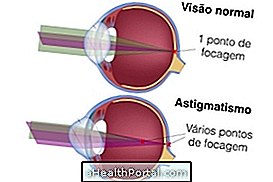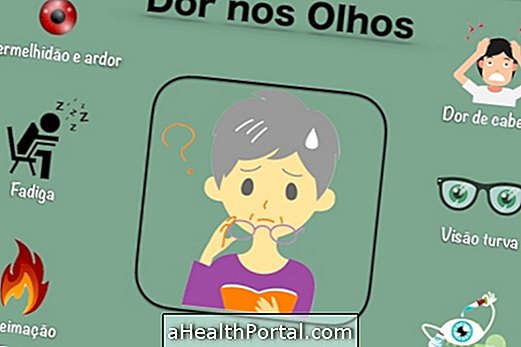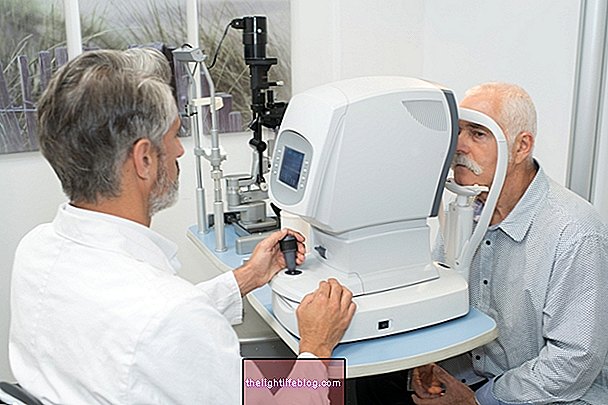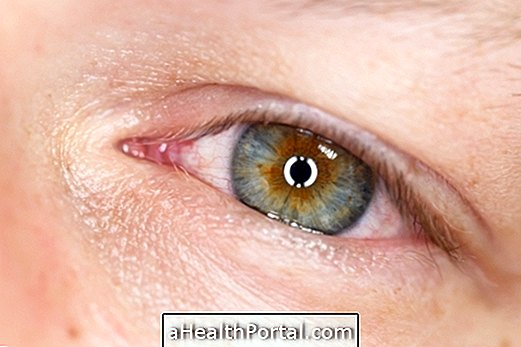Blurred vision, sensitivity to light, difficulty distinguishing similar letters and tiredness in the eyes are the main symptoms of astigmatism. In the child, this vision problem can be perceived from the performance of the child at school or from habits, such as close your eyes to see something better from afar, for example.
Astigmatism is a vision problem that occurs due to the change in the curvature of the cornea, which causes the images to be formed in a blurred form. Understand what astigmatism is and how to treat it.


Main symptoms
Symptoms of astigmatism arise when the cornea of one or both eyes has changes in its curvature, producing several focal points on the retina that cause the contours of the observed object to become blurred. Thus, early signs of astigmatism include:
- Blurred vision, confused similar letters, such as H, M or N;
- Extreme fatigue in the eyes during reading;
- Tearing when trying to see focused;
- Tension in the eye;
- Excessive sensitivity to light.
Other symptoms, such as distorted field of vision and headache, may occur when the person has high astigmatism or is associated with other vision problems, such as farsightedness or myopia, for example. Learn the difference between hyperopia, myopia and astigmatism.
Symptoms of childhood astigmatism
Symptoms of childhood astigmatism may not be easy to identify because the child knows no other way to see and therefore may not report symptoms.
However, some signs that parents should be aware of are:
- The child brings the objects of the face very close to see better;
- He puts his face very close to books and magazines to read;
- Close your eyes to see better from afar;
- Difficulty concentrating at school and low grades.
Children who have these signs should be taken to the ophthalmologist for eye examination and, if necessary, to wear glasses. Learn how the ophthalmologic exam is done.
What can cause astigmatism
Astigmatism is a hereditary vision problem that can be diagnosed at birth, but most of the time it is only confirmed in childhood or adolescence when the person reports that he is not seeing well and may have negative results at school, for example.
Although it is a hereditary disease, astigmatism can also arise due to eye bumps, eye diseases such as keratoconus, for example, or due to a surgery that was not very successful. Astigmatism is usually not caused by getting too close to the television or using the computer for many hours, for example.
How is the treatment done?
The treatment of astigmatism is determined by the ophthalmologist and is done with the use of glasses or contact lenses that allow to adapt the vision according to the degree that the person presents.
However, in more severe cases of astigmatism, it may be recommended to perform surgery with the aim of modifying the cornea and thus improving vision. Surgery, however, is only recommended for people who have been stabilized for at least 1 year or older than 18 years. Learn about surgery for astigmatism.
























